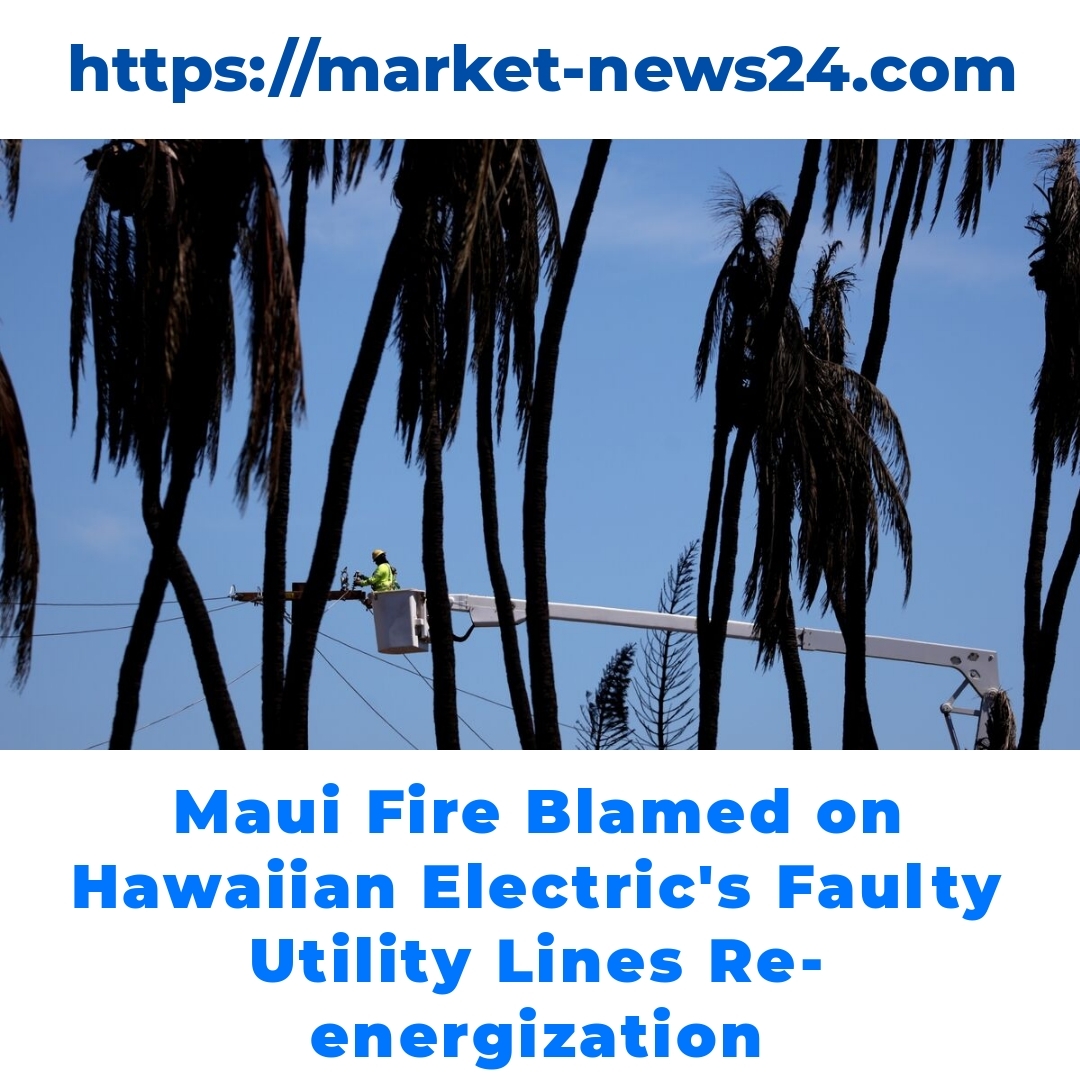The devastating Maui Fire that engulfed the historic town of Lahaina has raised significant concerns about fire safety and utility management. This article delves into the complex causes and aftermath of the Lahaina fire, emphasizing the role of Hawaiian Electric, dry vegetation, and the need for greater community awareness and preparedness.


Understanding the Lahaina Fire
What Happened?
The Lahaina fire broke out in Hawaii, quickly spreading through the historic town known for its rich culture and significant history. It engulfed residential areas, causing devastating damage and displacing countless residents. A crucial factor in the spread of this fire was the role of Hawaiian Electric, which had recently re-energized utility lines in the area. These lines have come under scrutiny for potentially contributing to the fire’s rapid escalation.
Initial Responses and Reactions
When the Lahaina fire began, local and national responses were swift. Firefighters and emergency personnel worked tirelessly to contain the blaze, while community members rallied to support those affected. This incident highlighted the pressing need for fire safety and increased awareness around wildfire risks, especially in areas like Lahaina, which are susceptible due to both environmental and infrastructural factors.
Causes of the Lahaina Fire in Maui
Role of Utility Lines
Investigations into the Lahaina fire revealed concerns about the impact of utility lines on wildfires. When Hawaiian Electric re-energized its lines, it may have inadvertently set off a chain reaction, leading to the ignition of nearby dry vegetation. This connection between utility infrastructure and wildfire risks raises serious questions about accountability and safety practices within utility companies.
Vegetation Factors
Another significant contributor to the Lahaina fire was the presence of dry vegetation. The region had been experiencing a drought, which left the landscape parched and highly susceptible to fire. Unmaintained areas filled with dried-out grass and shrubs provided the perfect fuel for the flames, demonstrating the relationship between unmanaged landscapes and wildfire susceptibility. Understanding these vegetation factors is crucial for preventing future incidents.
Fire Investigation and Accountability
Initial Findings of the Maui Fire Investigation
The Maui Fire Department conducted an investigation to determine the causes of the Lahaina fire. Early findings indicated that the re-energization of utility lines may have played a key role in the blaze’s outbreak. These results are pivotal in understanding what went wrong and how similar disasters can be prevented in the future.
Hawaiian Electric’s Responsibility
With the fire investigation unfolding, concerns have grown around Hawaiian Electric’s responsibility in ensuring safety. The implications for utility companies are vast, as they must reassess how they manage power lines, especially in fire-prone areas. The community’s demand for accountability is louder than ever, emphasizing the necessity for stricter safety measures to protect homes and lives from potential wildfire hazards.
Broader Implications and Lessons Learned
Historic Context of Lahaina
Protecting historic Maui towns like Lahaina from wildfires is of utmost importance. This area not only holds cultural significance but also symbolizes the resilience of its residents. The Lahaina fire serves as a stark reminder of the risks facing such communities and underscores the need for vigilant fire prevention strategies.
Awareness of Wildfire Causes
Understanding the causes of wildfires is critical for prevention. Education around the factors that contribute to fires, such as utility line management and dry vegetation, can empower communities to take proactive measures. Community awareness initiatives can play a vital role in reducing the risks associated with wildfires in the future.
Future Fire Safety Preparedness
Improving fire safety in vulnerable areas like Lahaina is essential. Here are some suggestions for enhancing preparedness:
- Implement regular maintenance of utility lines and vegetation control.
- Establish community firebreaks and create defensible spaces around homes.
- Conduct regular fire safety training and awareness programs for residents.
These strategies can help reduce the risks of future wildfires and protect communities more effectively.
Conclusion
In summary, the Maui Fire has raised significant concerns about fire safety, the management of utility lines, and the importance of community preparedness. As we reflect on the impacts of the Lahaina fire, it’s crucial that we prioritize responsible management of our environment and infrastructure to prevent future disasters. Let’s work together as a community to build awareness and implement strategies that promote fire safety and prevention.
Additional Resources
For more information on fire safety, consider checking out the following resources:
Feel free to reach out to your local fire department or Hawaiian Electric for inquiries about fire safety and prevention strategies. Educating ourselves about wildfire causes and taking proactive measures is essential for safeguarding our communities against future incidents like the Maui Fire.
What caused the Lahaina fire?
The Lahaina fire was largely attributed to the re-energization of utility lines by Hawaiian Electric, which may have ignited nearby dry vegetation. Additionally, the area’s drought conditions led to an abundance of dry plants that fueled the fire’s rapid spread.
How did the community respond to the fire?
Local and national emergency responders quickly mobilized to combat the fire. Community members also came together to support those impacted, showcasing solidarity and resilience in the face of disaster.
What is Hawaiian Electric’s role in the fire?
Hawaiian Electric’s role is under investigation, as their actions in re-energizing utility lines are believed to have contributed to the fire. This has raised concerns about their accountability and the safety protocols in place for managing power lines in fire-prone areas.
What measures can prevent future wildfires?
To prevent future wildfires, it’s important to:
- Regularly maintain utility lines and conduct vegetation control.
- Establish community firebreaks and create defensible spaces around homes.
- Conduct fire safety training and awareness programs for residents.
Why is Lahaina’s historic context important?
Lahaina holds cultural significance and symbolizes the resilience of its community. Protecting historic towns from wildfires is vital to preserving their heritage and ensuring the safety of their residents.
Where can I find more information on fire safety?
For additional resources, you can visit:






